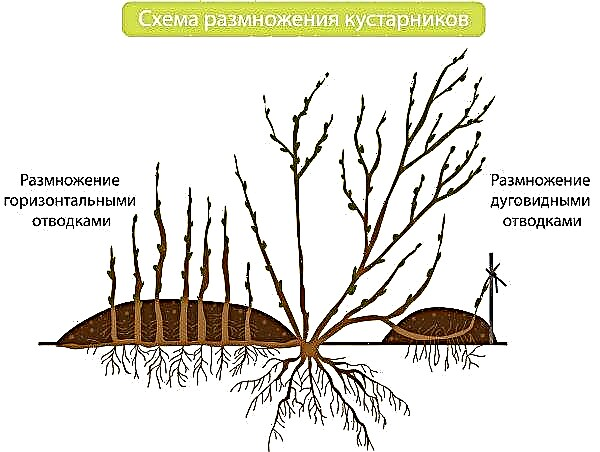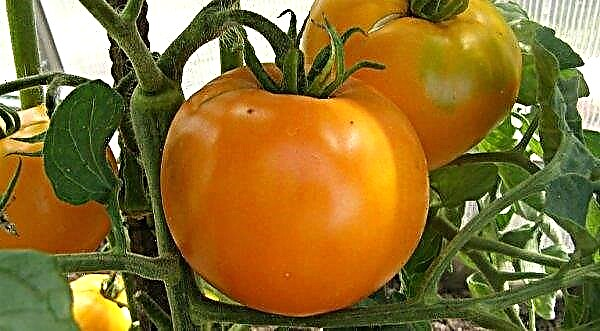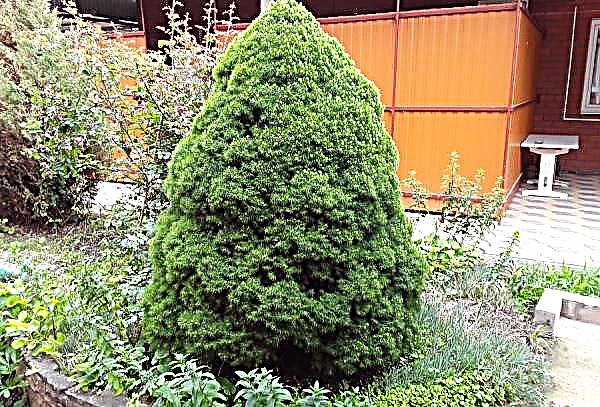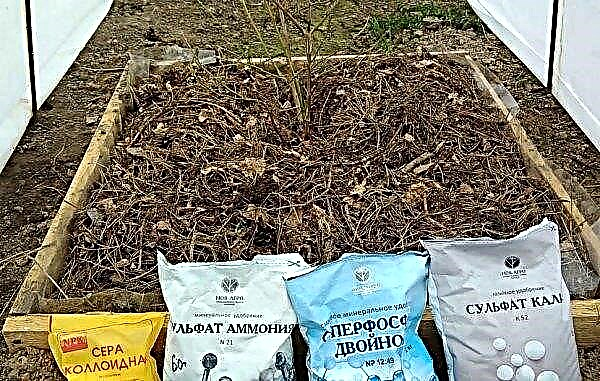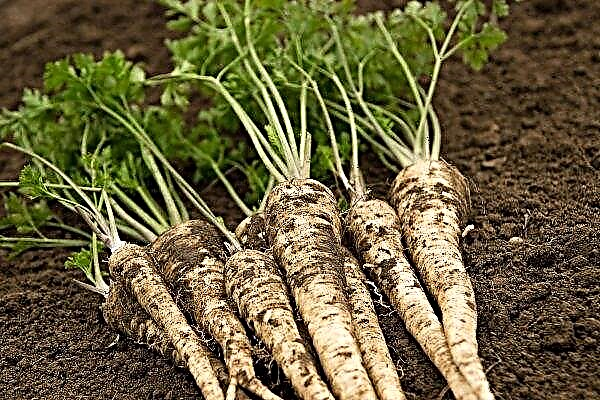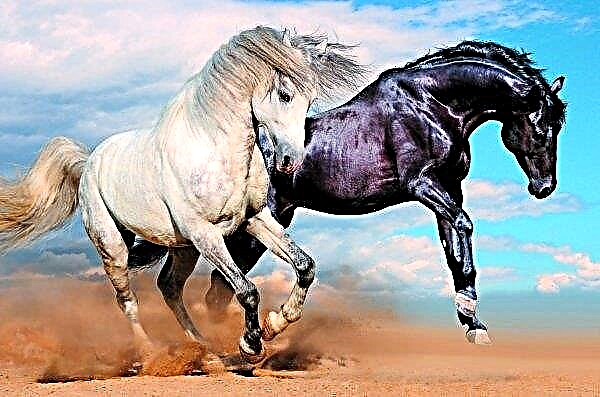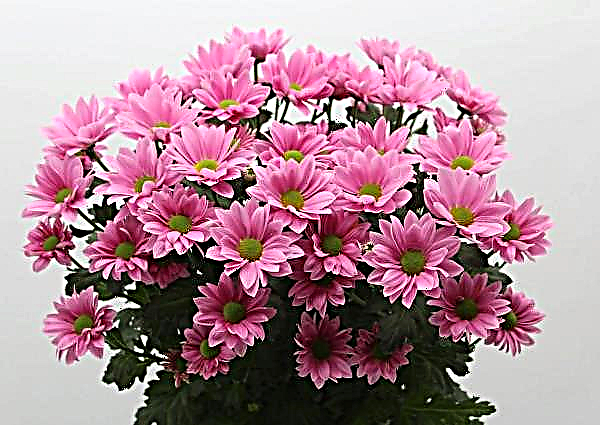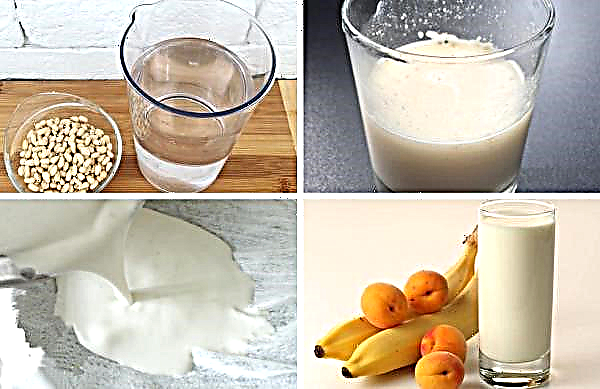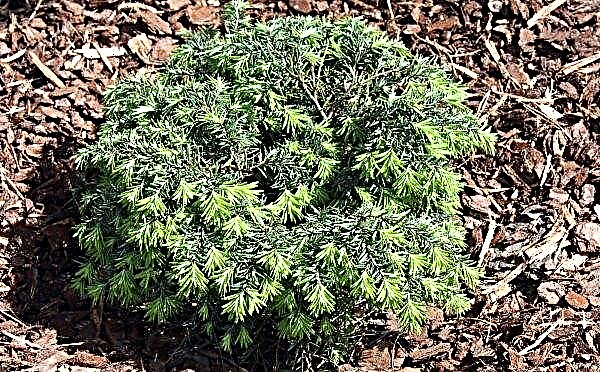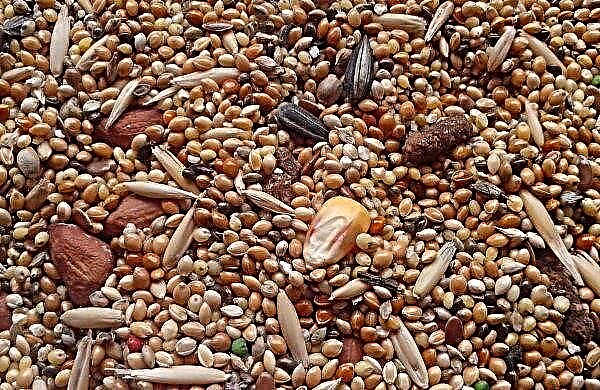The fruiting periods of thermophilic plants in regions with a short warm season are limited. Therefore, many vegetables are grown under shelter. The article will discuss how to get a pepper crop in a greenhouse, what conditions for growth and development are necessary for this culture.
Rules for growing pepper in a greenhouse
Greenhouses can be made of polycarbonate, with a polyethylene or foil coating. Growing peppers in a greenhouse of any type, you must adhere to the rules.
Did you know? Pepper helps lower blood pressure and protects against cardiovascular disease. It is a source of antioxidants that protect the body from the harmful effects of free radicals, strengthen immunity and regulate metabolism.
Temperature
Pepper requires a lot of heat. The thermal regime depends on the growth phase: the temperature within +24 ... + 27 ° C is suitable for seed germination, for fruit-bearing plants - +20 ... + 27 ° C during the day and +16 ... + 20 ° C at night. In the greenhouse, it is necessary to maintain the desired temperature, since a decrease to + 15 ° C or less leads to a stop of plants in growth and decay of flowers and fruit buds. Soil temperature should be in the range +18 ... + 22 ° C. The thermometer readings below + 10 ° C mean growth inhibition and the inability of the plant root system to absorb water.
Shine
Pepper is a short-day culture. The required lighting time during the day is 12 hours. During flowering and fruiting, the lighting time can be increased up to 14 hours. The minimum light intensity should be 3000–4000 Lux.
Irrigation
In addition to maintaining a high temperature, the relative humidity of the air and soil must also be adjusted in the greenhouse.
Did you know? Unlike many other vegetables, during heat treatment, pepper retains most of its nutritional value.
The need for water depends on the development phase:
- When sowing seeds - the substrate should have a moisture content of 75–80%, and air humidity should be at the level of 65–70%.
- During the appearance of the first sprouts from the ground, the humidity of the substrate is 70–75%, and that of air (up to the phase of fruit formation) is 70–75%.
- During the fruiting period, the moisture content in the substrate should be approximately 80% of full saturation. The soil cannot be drained. Insufficient humidity leads to falling flowers and ovaries. Dry top rot may also appear. The optimum relative humidity at this time is 75–80%.

Carbon dioxide
It is worth enriching the air in the greenhouse with carbon dioxide, as the number of ovaries formed and their quality immediately increase.
Carbon dioxide enrichment of greenhouse air can be done in two ways:
- open a CO2 gas cylinder in the greenhouse, which is rarely used due to high financial costs and technical considerations;
- to install large containers in the greenhouse premises with a solution of water and bird droppings being in the process of fermentation - as a result of fermentation of feces, carbon dioxide regularly enters the air.
How to choose a grade?
Varieties differ in shape, size and color of the fruit. They can be yellow, orange, red, purple or cream. For cultivation in the greenhouse varieties are selected, characterized by early fruiting, high productivity and resistance to diseases and pests. Some are resistant to the mosaic Tm virus and the potato virus Y, PVY.
Important! In the greenhouse you cannot plant sweet Bulgarian and bitter capsicum at the same time. — these varieties are easily pollinated among themselves, and as a result the gardener will receive large fruits of bitter pepper.
The most valuable are peppers with a thick, juicy and sweet fruit wall. Depending on the purpose, choose varieties with thin or thick skin. Thicker peel allows you to transport fruits over long distances and store them longer. Varieties with thin skin are chosen for growing seed material and eating.
Varieties recommended for sowing under shelter:
These pepper varieties are characterized by high productivity, early or medium fruiting and tasty, juicy fruit pulp.Dates for planting pepper in a greenhouse
Peppers are planted in the greenhouse from February to March for early production, and at the turn of the end of June - beginning of July for the autumn harvest.
Preparatory work
Before starting the cultivation of pepper crops, vegetable growers are pre-preparing the greenhouse and soil (substrate), which is a prerequisite for obtaining high yields.
Did you know? In addition to sweet pepper varieties, there are spicy varieties that contain capsaicin, an alkaloid that stimulates intestinal motility and secretion of gastric juice. Capsaicin is also responsible for the pungent taste of pepper.
Greenhouse preparation
Before starting operation of the greenhouse, you must:
- Wash film, polycarbonate or glass on both sides so that the walls and roof of the greenhouse become as transparent as possible.
- When growing plants on the ground, the soil in the greenhouse is periodically changed, as it is depleted and colonized by pests and viruses.
- Antiseptic treatment is carried out on all surfaces of the greenhouse and the equipment used (pallets, pots, hoses, watering cans and tools for tillage).
- They process the greenhouse from rodents and insect pests, they usually fumigate with burning sulfur.

Soil preparation
For different cultivation methods, different soil preparation is needed:
- In greenhouse soil. It is most often used during planting in summer and early autumn. The soil must be humic, permeable and free of salt. For fertilizing the soil, cattle manure is used at the rate of 1–1.5 tons per 100 m².
- In individual containers. Peat substrate or steamed peat, steamed at high temperature, is used. In preparation for planting seedlings, 2/3 containers are filled with a disinfected substrate.
- On straw bales. Before planting seedlings, straw bales are very hot. After cooling the straw to approximately + 25 ° C, the bales are ready for transplanting.
- In the bags. Bags are filled with peat substrate, sawdust or bark of non-resinous trees, tied and stacked on their sides in a row.
- On mineral wool. Mineral wool mats are impregnated with a liquid nutrient medium, after which holes are cut through them, where a little later seedlings will be planted.
Important! In greenhouse cultivation, mechanical pollination of plants is often used, using the method of bush vibration. In some greenhouses, bumblebees are used to pollinate peppers.
Seedling Planting Scheme
Keeping the distance between the plants in the row and in the row-spacing depends on the chosen method of growing pepper in the greenhouse.
Used pepper growing schemes:
- In the ground. 3-5 plants are planted per 1 m² according to the scheme of 60–80 cm × 30–50 cm. Pepper bushes are formed in 2-3 stems.

- In individual containers. Seedlings are placed in containers with a diameter of 20–22 cm and a height of 20–25 cm, with a capacity of 5–7 liters. Containers with growing seedlings are placed on the floor in the greenhouse so that the distance between seedlings is 80 × 30 cm, with a density of 4.2 plants per 1 m². This method is often used in greenhouses where it is not possible to heat the ground, and in low film tunnels.
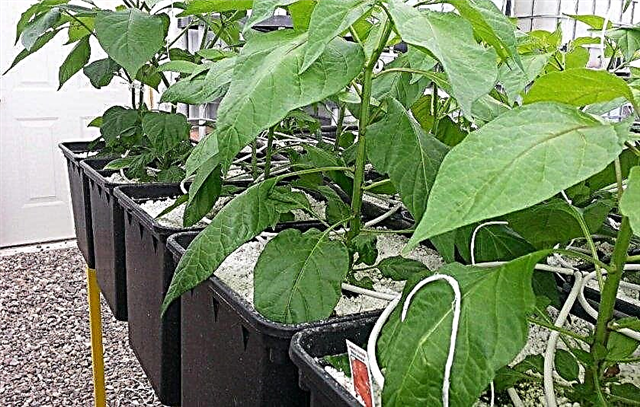
- On straw bales. As with growing in containers, this method is used in the absence of the possibility of heating the soil in the greenhouse and in film tunnels. Straw bales can be used as heating material and cover the substrate or act as the substrate itself. With this method, watering should be carried out often. Seedlings are planted in straw bales according to the scheme of 40-50 cm × 40-50 cm.
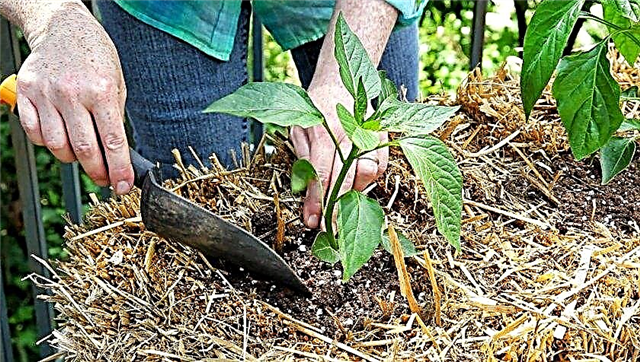
- In the bags. The bags filled with the substrate are laid on polystyrene plates and covered with foil on top. Seedlings are planted in holes cut into the foil. Through these holes water is supplied to irrigate the root system. Apply a 40 × 40 cm pattern.
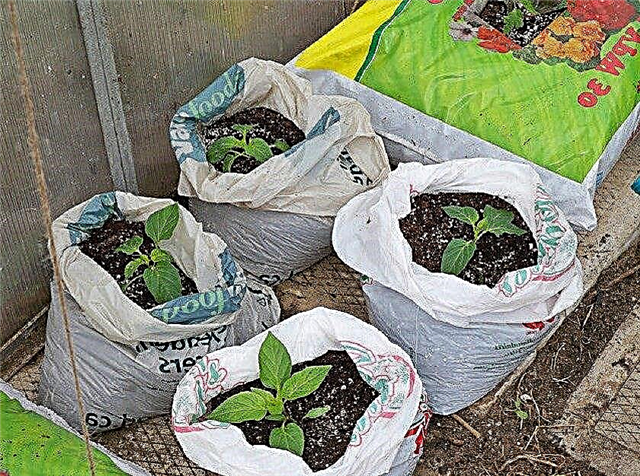
- Mineral wool cultivation. More often this method is used for long-term cultivation. The air in the greenhouse is heated to + 25 ° C. The floor of the greenhouse is covered with a thick plastic film, after which two strips of mineral wool are placed on it in two layers, resulting in mats for growing plants. Mats are watered with nutritious liquid, after which they are ready to grow pepper. Use a landing according to the scheme 50 × 50 cm.
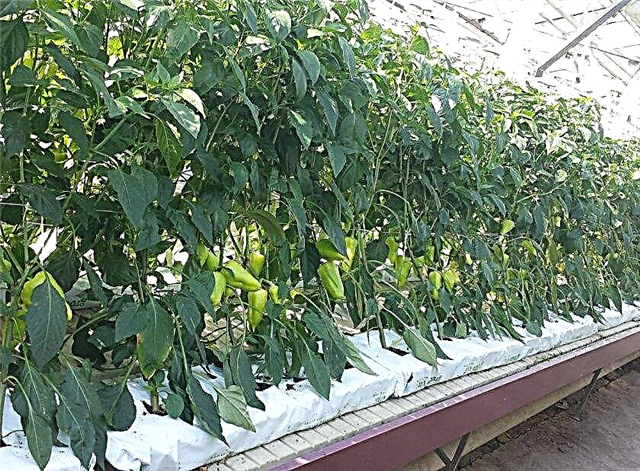
Growing and caring for peppers in a greenhouse
Pepper seedlings care includes: temperature and humidity regulation, irrigation, soil loosening, plant formation and pollination of flowers, disease and pest control, and fruit picking. To improve the quality and size of fruits, every 2-3 weeks remove unnecessary parts of plants: fruit buds from the first fork of the main shoot, lateral shoots, dry or lower leaves. Broken branches, wilted or virus-infected plants are also removed. The tops of the shoots above the last fruit are removed to accelerate the ripening of the peppers.
Important! Any type of top dressing is carried out after watering or simultaneously with it, and only when the air temperature in the greenhouse drops below + 25 ° C.
Watering
In a greenhouse, pepper is watered by the method of drip irrigation, which allows moisture to get directly under the root of the plant in a given volume. Such irrigation technology does not increase air humidity, which means it does not contribute to the development of fungal diseases on peppers. Through the drip irrigation system, it is convenient to supply the required amount of liquid top dressing to the plant roots, along with water. Under each adult pepper plant in the greenhouse, at least two liters of moisture should flow daily. Irrigation on the leaf is used in isolated cases when there is a need to immediately lower the air temperature and cool the plants. Immediately after sprinkling, the windows and doors open to create a draft, which will help to quickly dry the plants.
Under each adult pepper plant in the greenhouse, at least two liters of moisture should flow daily. Irrigation on the leaf is used in isolated cases when there is a need to immediately lower the air temperature and cool the plants. Immediately after sprinkling, the windows and doors open to create a draft, which will help to quickly dry the plants.
Fertilizer application
Pepper requires a well-fertilized soil, especially when grown in a greenhouse. Nitrogen, potassium, calcium and the corresponding acidity of the soil (pH 5.5–6.0) are very important. The greatest demand for nutrients is in the fruiting phase of the crop. This is due to the higher bioavailability of nutrients for the fruit. Two root top dressings and an unlimited number of top dressings on a leaf are carried out on pepper, based on the needs of plants. The interval between top dressing is at least 14 days. The first root dressing is carried out 2 weeks after transplanting seedlings to a permanent place, the second - during flowering and the formation of ovaries. All subsequent feeding is carried out only on a leaf, taking into account the state of the plants.
Two root top dressings and an unlimited number of top dressings on a leaf are carried out on pepper, based on the needs of plants. The interval between top dressing is at least 14 days. The first root dressing is carried out 2 weeks after transplanting seedlings to a permanent place, the second - during flowering and the formation of ovaries. All subsequent feeding is carried out only on a leaf, taking into account the state of the plants.
Pest and Disease Control
Peppers are prone to the same diseases and pests as tomatoes.
Pests of pepper in a greenhouse:
- aphid;
- thrips;
- leaflets;
- spider mite.
Important! When using chemicals or insecticides in greenhouses, personal protective equipment should be used, since direct contact with these substances can harm the human body.
The most dangerous pepper pests in the greenhouse:
- Spider mite - This insect is extremely difficult to see with the naked eye. The maximum size of an adult pest is 0.5 mm, until it reaches the insect is transparent. It feeds on the juice of pepper leaves, thereby leaving tiny dark necrotic spots on their surface. When the tick is attacked, the leaf turns yellow and then gradually fades. As soon as a spider mite is seen on pepper plantings, one of the insecticides is sprayed, for example, “Akaramik” at a concentration of 50 ml per 100 l of water or “Claytin Abtin” in the same proportion.
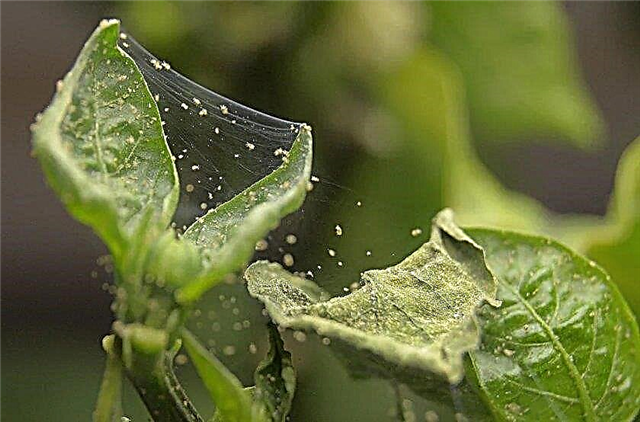
- Peach aphid - tiny insects are brought onto plants by ants, which subsequently protect them and feed on secreted sweet secret, “honey dew”. Aphids, depending on the species, may have a different color of chitin: green, black, gray, pink. The body size of an adult insect does not exceed 0.5 mm. Pests feed on sap and plant cells, if you do not take urgent measures to protect the pepper, after a while the planting will begin to wither and gradually die. To destroy aphids in greenhouses, vegetable growers use insecticides: Confidor Maxi, Actofit, Actellik, Nurel D. In a greenhouse with a small area, you can fight aphids with biological methods: washing off with a strong pressure of water, spraying with nettle or dandelion infusion.

Did you know? The content of vitamins and nutrients varies depending on the color of the pepper. Most vitamin C and beta-carotene are found in red pepper. Yellow is an excellent source of lutein and zeaxanthin, which has a good effect on the eyes. Green is a source of vitamin E and folic acid.
Common diseases:
- Apical dry rot - manifests itself in the form of brown spots on the tops of the pepper, over time, damaged areas become concave. Often occurs on plants cultivated in greenhouses if the soil is not covered with mulch, excessively watered or fertilized (with mineral fertilizers or manure). The disease can also be caused by a deficiency of calcium in the soil. Treatment: they fight the disease by spraying calcium chloride on the leaves in several doses. Spraying in the greenhouse should be carried out at high temperatures, when the fruits have already reached several centimeters in diameter.
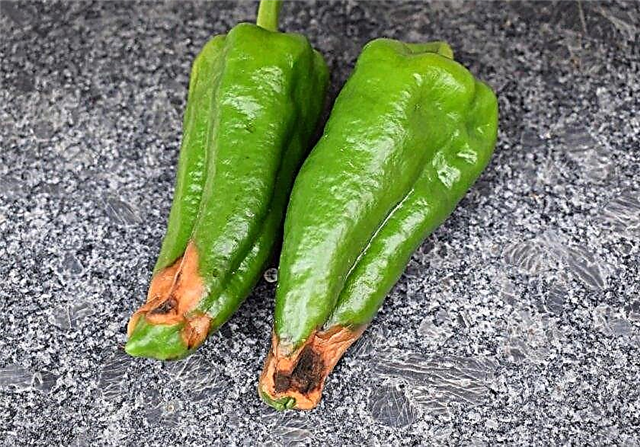
- Verticillosis - the first symptom is a gradual yellowing of the lower leaves, in the future, the disease leads to withering of the entire plant. Treatment: it is possible to decontaminate the greenhouse soil only through autumn thermal decontamination. The soil is heated with water vapor to +80 ... + 90 ° C for 20 minutes.
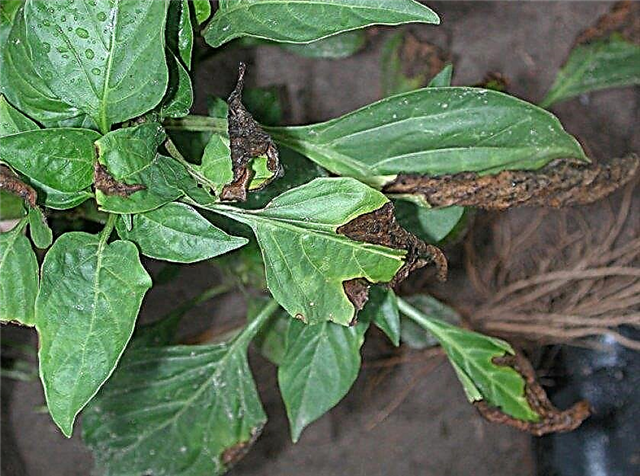
- Gray mold - The first symptoms are wet, transparent spots on the leaves and the gradual decay of the fruit. The infected areas are covered with gray fluff, and the petioles and stems are gradually dying. Causes of gray mold: mechanical damage to stems and leaves in high humidity. Treatment: leaf treatment of plants with fungicides is carried out immediately after the onset of the first symptoms or prophylactically during periods of high risk (high humidity, low air temperature, high plant density). Use drugs: Amistar, Mirador, Polyversum, Signum and Rovarl Aquaflo.
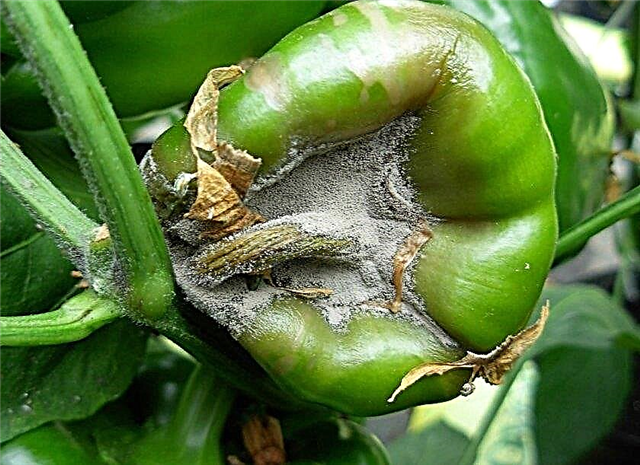
- Fungal diseases (late blight, alternariosis, bacteriosis) - brown or gray strokes and spots appear on the diseased plant, in wet weather, the affected areas become covered with mycelium and begin to rot, in heat - they dry out and mummify. To avoid fungal diseases, it is necessary: to avoid thickening, maintain the proper temperature and humidity in the greenhouse, water the plants moderately. As a prophylaxis and treatment, spraying of fungicides on the sheet is used: the preparations "Fundazol", "Topsin-M", "Barrier", "Barrier", "Ridomil Gold", "Gamair".
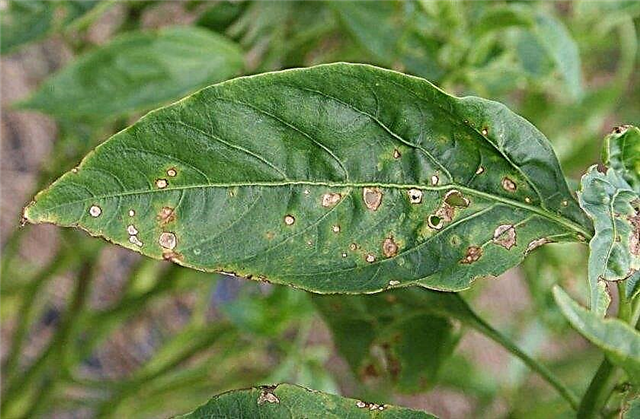
Harvest Dates
Fruits are harvested when they acquire the size and color typical of the variety. Harvesting is carried out depending on the type of crop, the date of planting seedlings and the characteristics of the variety. The first fruits begin to be harvested approximately 45–55 days after planting. Harvesting is usually done every 7-12 days. The fruiting of pepper lasts until late autumn, the average yield is 25 kg per 1 m². Pepper is collected manually, after which it can be stored for up to 5 weeks at an air temperature of +7 ... + 8 ° C.
Peppers that have reached the required size can be removed from the plant, without waiting for the full color of the fruit, green. Peppers are capable of ripening (ripening outside the bush), after a while the fruits will acquire a characteristic color for the variety. This property of pepper allows you to transport fruits over long distances without loss of freshness of the product.In order to get a good crop of pepper in a greenhouse, it is necessary to provide the culture with timely care, which consists in watering, fertilizing, protecting plants from diseases and pests.












